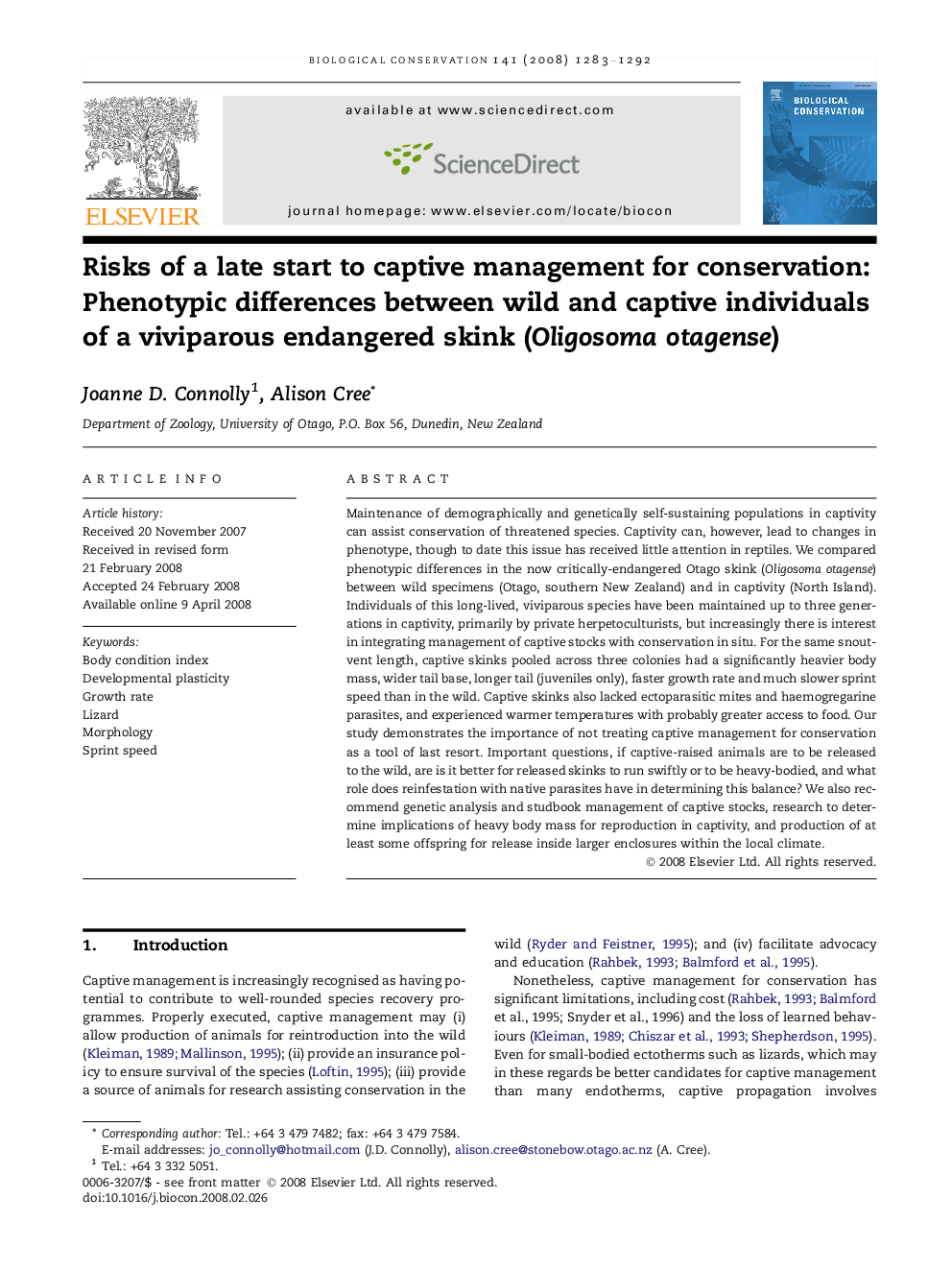| Article ID | Journal | Published Year | Pages | File Type |
|---|---|---|---|---|
| 4386951 | Biological Conservation | 2008 | 10 Pages |
Abstract
Maintenance of demographically and genetically self-sustaining populations in captivity can assist conservation of threatened species. Captivity can, however, lead to changes in phenotype, though to date this issue has received little attention in reptiles. We compared phenotypic differences in the now critically-endangered Otago skink (Oligosoma otagense) between wild specimens (Otago, southern New Zealand) and in captivity (North Island). Individuals of this long-lived, viviparous species have been maintained up to three generations in captivity, primarily by private herpetoculturists, but increasingly there is interest in integrating management of captive stocks with conservation in situ. For the same snout-vent length, captive skinks pooled across three colonies had a significantly heavier body mass, wider tail base, longer tail (juveniles only), faster growth rate and much slower sprint speed than in the wild. Captive skinks also lacked ectoparasitic mites and haemogregarine parasites, and experienced warmer temperatures with probably greater access to food. Our study demonstrates the importance of not treating captive management for conservation as a tool of last resort. Important questions, if captive-raised animals are to be released to the wild, are is it better for released skinks to run swiftly or to be heavy-bodied, and what role does reinfestation with native parasites have in determining this balance? We also recommend genetic analysis and studbook management of captive stocks, research to determine implications of heavy body mass for reproduction in captivity, and production of at least some offspring for release inside larger enclosures within the local climate.
Related Topics
Life Sciences
Agricultural and Biological Sciences
Ecology, Evolution, Behavior and Systematics
Authors
Joanne D. Connolly, Alison Cree,
